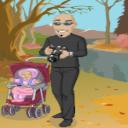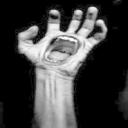Yahoo Answers is shutting down on May 4th, 2021 (Eastern Time) and beginning April 20th, 2021 (Eastern Time) the Yahoo Answers website will be in read-only mode. There will be no changes to other Yahoo properties or services, or your Yahoo account. You can find more information about the Yahoo Answers shutdown and how to download your data on this help page.
Trending News
7 Answers
- Anonymous1 decade agoFavorite Answer
yes...basically, you want to use the LOWEST number possible, until low light conditions make it impossible to hand hold the camera!!!!
Like the guy above says, if you are using a tripod, you can leave the ISO at the lowest setting, because with a tripod you don`t have to worry about hand holding a camera at slow shutter speeds...the tripod is rock steady !
What will happen if you are using say an ISO 100 speed, and then you try to take a picture in low light....you won`t be able to...that is, you will have to keep lowering the shutter speed just for your camera to work....suddenly, you are down to 1 60th , 1 30th or lower, which means that unless you are a surgeon or something, with rock steady hands, you won`t be able to hand hold the camera.
Therefore, instead of having to lower your shutter speed, RAISING the ISO enables you to take pictures in low light condions
and keep a fairly high shutter speed.
This is especially true if you are even trying to take pictures of high speed action on a cloudy or overcast day.......even witha very FAST lens...if you are using ISO 100 for example, you will find that you won`t be able to use a fast enough shutter speed to freeze the action!! SO you RAISE the ISO to about 800, and BINGO!!!
Some of this stuff is hard to understand until you are out in the field. You especially learn VERY fast why you might need to use higher speed film or higer ISO settings if you have a FILM camera!! You are stuck with what you put in the camera. With digital, you have the luxury of simply increasing the ISO!!
Summary....bright conditions, slow action...use about ISO 100
Bright conditions, high speed action...maybe iso 200-400
moderate low light conditons, slow action
ISO 200-400
moderate low light conditions, fast action, ISO 400-800
low light condions indoors, or twilight hours....probably ISO 800 for sure if you are not using a flash.
- Anonymous1 decade ago
Same with a film.
The lower the light levels the higher the ISO, and the higher the light levels the lower the ISO.
400 ISO usually works best in both low and high levels of light.
although on digital cameras the ISO can go to I believe 1800 ISO depending, and a low ISO of 100.
The higher the ISO the more memory that is used in Compact flash cards so make sure you have an extra if you plan on taking a lot of pictures
- 1 decade ago
the same way you bought film.... low light=higher ISO number
bright lighting=lower ISO number
most digital cameras will allow from ISO 100-1600 and get noisy (grainy) after ISO 800 just like film
- Mere MortalLv 71 decade ago
In most situations, my personal rule of thumb is to use the lowest ISO I can that still allows me to do handheld photography.
If I am using a tripod I, 98% of the time, use the lowest ISO available to me. The lower the ISO the less I suffer distracting noise in the image.
- How do you think about the answers? You can sign in to vote the answer.
- Death™Lv 71 decade ago
I usually use the lowest I can. It took me a while to learn that -- I noticed some of my photos just weren't right; they would end up with an awkward graininess to them. By comparing the settings data, I realized that the higher the ISO, the worse it was.
- Anonymous1 decade ago
yes i do
i leave it at 100 and only if all other options have been used do I put it any higher.
film does not have noise, film has grain,
grain can be used as an artistic quality in fine art photography, noise im not sure about as an artistic quality, noise in digis i think is more a fault, they are however improving it all the time





